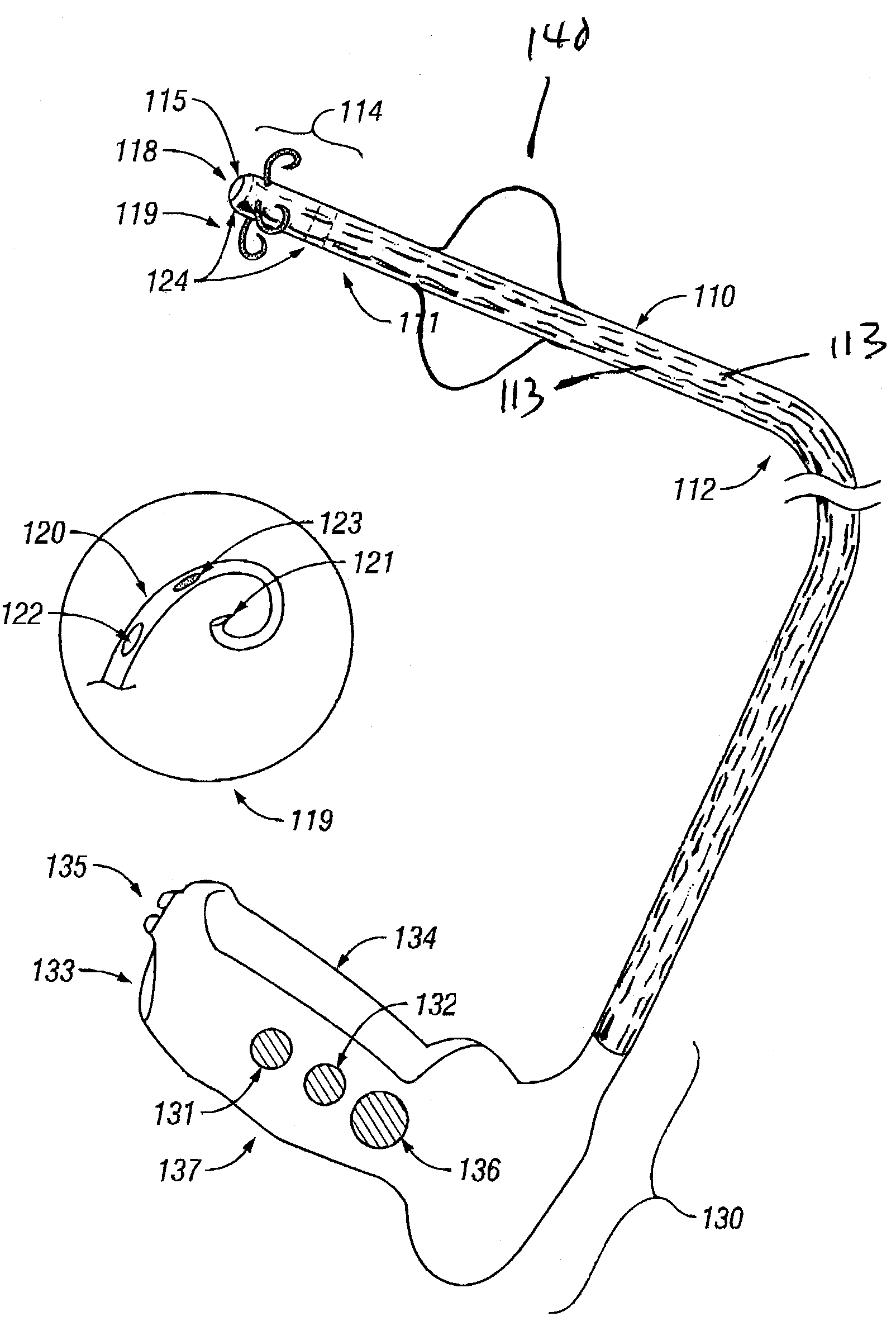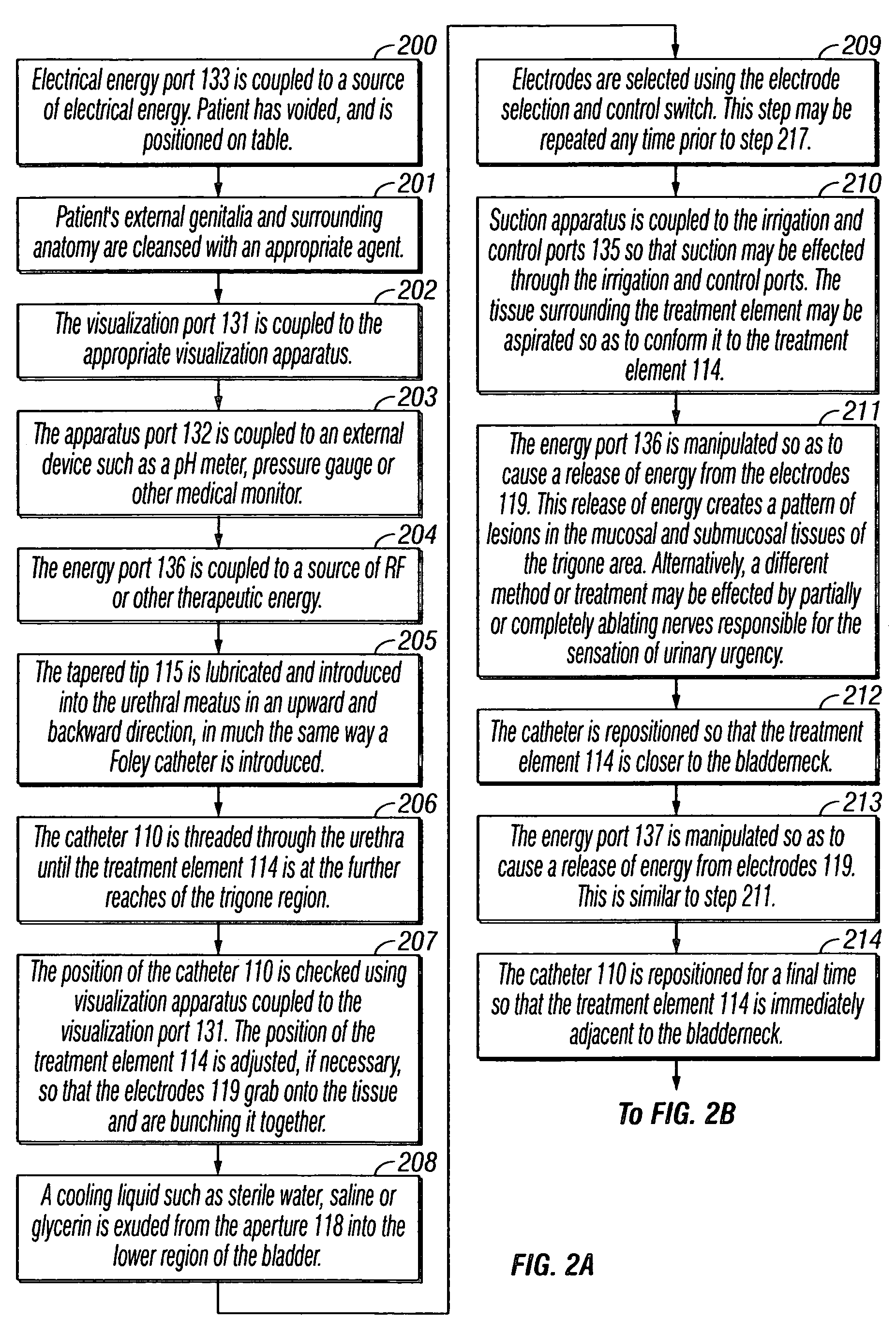Treatment of urinary incontinence and other disorders by application of energy and drugs
a technology of energy and drugs, applied in the field of treating body tissue, can solve the problems of impaired urinary retention, poor urinary control, and relative tone of the bladder and accessory muscles to weaken,
- Summary
- Abstract
- Description
- Claims
- Application Information
AI Technical Summary
Benefits of technology
Problems solved by technology
Method used
Image
Examples
Embodiment Construction
[0029]In the following description, a preferred embodiment of the invention is described with regard to referred process steps and data structures. Embodiments of the invention can be implemented using general-purpose processors or special purpose processors operating under program control, or other circuits, adapted to particular process steps and data structures described herein. Implementation of the process steps and data structures described herein would not require undue experimentation or further invention.
System Elements
[0030]FIG. 1 is block drawing of a system for treatment of female urinary incontinence using a first device.
[0031]A system 100 includes a catheter 110, a treatment element 114, a control assembly 130 and a shielding element 140. In an alternate embodiment, the shielding element 140 is not present.
The Catheter
[0032]The catheter 110 includes a distal segment 111 and a proximal segment 112. The distal segment 111 and the proximal segment 112 form one continuous ...
PUM
 Login to View More
Login to View More Abstract
Description
Claims
Application Information
 Login to View More
Login to View More - R&D
- Intellectual Property
- Life Sciences
- Materials
- Tech Scout
- Unparalleled Data Quality
- Higher Quality Content
- 60% Fewer Hallucinations
Browse by: Latest US Patents, China's latest patents, Technical Efficacy Thesaurus, Application Domain, Technology Topic, Popular Technical Reports.
© 2025 PatSnap. All rights reserved.Legal|Privacy policy|Modern Slavery Act Transparency Statement|Sitemap|About US| Contact US: help@patsnap.com



